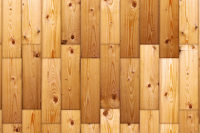
The
Plasmadust process lends a new quality to the contacting of solar cells.

The patented Plasmadust technology allows users to metalize and
coat materials in a solvent-free, energy-efficient process. The coating process
is based on a combination of cold-active plasma and micro/nano particles.
The Plasmadust technology is based on a combination of cold-active plasma and micro-powders. It allows for coating processes using metal, polymer, semiconductor and other coatings to be carried out directly on two- and three-dimensional substrates such as metal, plastic, silicon, glass, ceramic, paper, board, and textiles in a chemical-free, thus VOC-free, process. It also eliminates the need for the etching and acid-cleaning processes usually required in surface processing.

The comparatively low temperature of approximately 120°C makes it possible to coat even
temperature-sensitive substrates such as plastics. The adjustable and uniform
particle flow ensures even and repeatable layer thicknesses.
Layer Deposition Using Cold-Active Plasma
Reinhausen Plasma uses its own plasma generator, Plasmabrush PB2, for layer deposition with the Plasmadust process. Unlike conventional atmospheric-pressure plasma systems, plasma gas is not generated in an oscillating circuit, but rather on the basis of the inverter principle by means of highly-effective, pulsed-arc discharges. This generates non-thermal plasma with a measurable temperature of 120°C, which is made possible by the imbalance of the energy content of light electrons and heavy gas particles under atmospheric conditions. Compared to other common processes, such as plasma/flame spraying, this results in considerably lower thermal stressing of the basic substrate. In addition, the particle speeds of the Plasmadust process are lower than those of other processes, such as cold gas and plasma spraying.The continuous and agglomerate-free feeding of the coating powder, which has a particle diameter of 100 nm to 20 µm, is carried out by a specially developed atomizer/conveyor technology. An adjustable and uniform particle flow ensures even and repeatable layer thicknesses.
The plasma’s physical properties, paired with ideally adjusted powder feeding, make it possible to deposit cohesive layers on even extremely thin and/or temperature-sensitive substrates (such as plastics, films and paper) with the Plasmadust process. The repeatable layer thicknesses range from 1-100 µm and processing speeds top out at 150 meters/min. Porosity can be set to 1-30%. Depending on the type of powder, a coating path width of up to 10 mm can be achieved with a plasma generator. A generator can be used in a scanning process or several generators can be arranged together to coat or metalize larger surfaces.

The setting of process parameters such as layer geometry,
path width and layer thickness can be adjusted to suit specific requirements
and parts.
Potential for Coating Processes where Quality and Costs are Optimized
Nearly any material that can be pulverized and melted is suitable as a coating material: salt, gold, copper, aluminum, tin, bismuth, tellurite, CIGS, polymers, thermoplastics, glass, and ceramic materials. For example, salt as a fluxing agent can be deposited in a dry and controllable process. In the case of printed circuit-board production, Plasmadust technology allows circuit paths to be applied directly onto the board with use of a template. Shorter production times and the use of less-expensive plastics can increase the potential for cost savings. Other examples of applications for Plasmadust technology include ecological and efficient wafer coating, metallization and contacting of solar cells, the manufacture of flexible circuit boards, and coatings for EMC shielding. Even semi-conductive materials such as bismuth and tellurite can be deposited, such as for electrical switching systems and the cost-efficient manufacture of generators in thermoelectric applications. Deposition of a primer layer on rubber and caoutchouc surfaces for metal/rubber composite systems is possible, as is the creation of functional and decorative layers. In addition, alloys and material composites such as carbon/metal, which cannot be treated with conventional coating processes, can also be deposited.
Plasmadust can process any material that can be pulverized
and melted, including salt, gold, copper, aluminum, tin, bismuth, tellurite,
CIGS, polymers (PTFE, PE, ABS, PP), glass, and ceramic materials.
Energy-Efficient Coating Provides High Cost Effectiveness
The highly reactive micro or nano-powders melt at low temperatures, thus the coating process requires considerably less power when compared to conventional processes. For example, the coating/metallization of a surface of one square meter uses from 1/10 to 1/100 of the energy required for thermal spraying processes.The Plasmadust system can be integrated into production lines as simply and quickly as it can into roll-to-roll processing systems.
For more information, visitwww.reinhausen-plasma.com.



